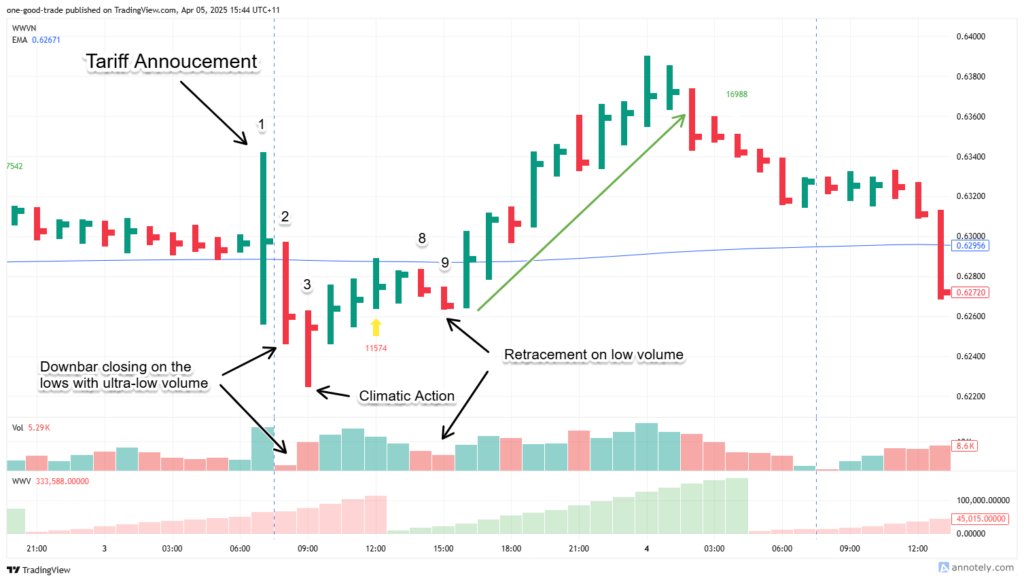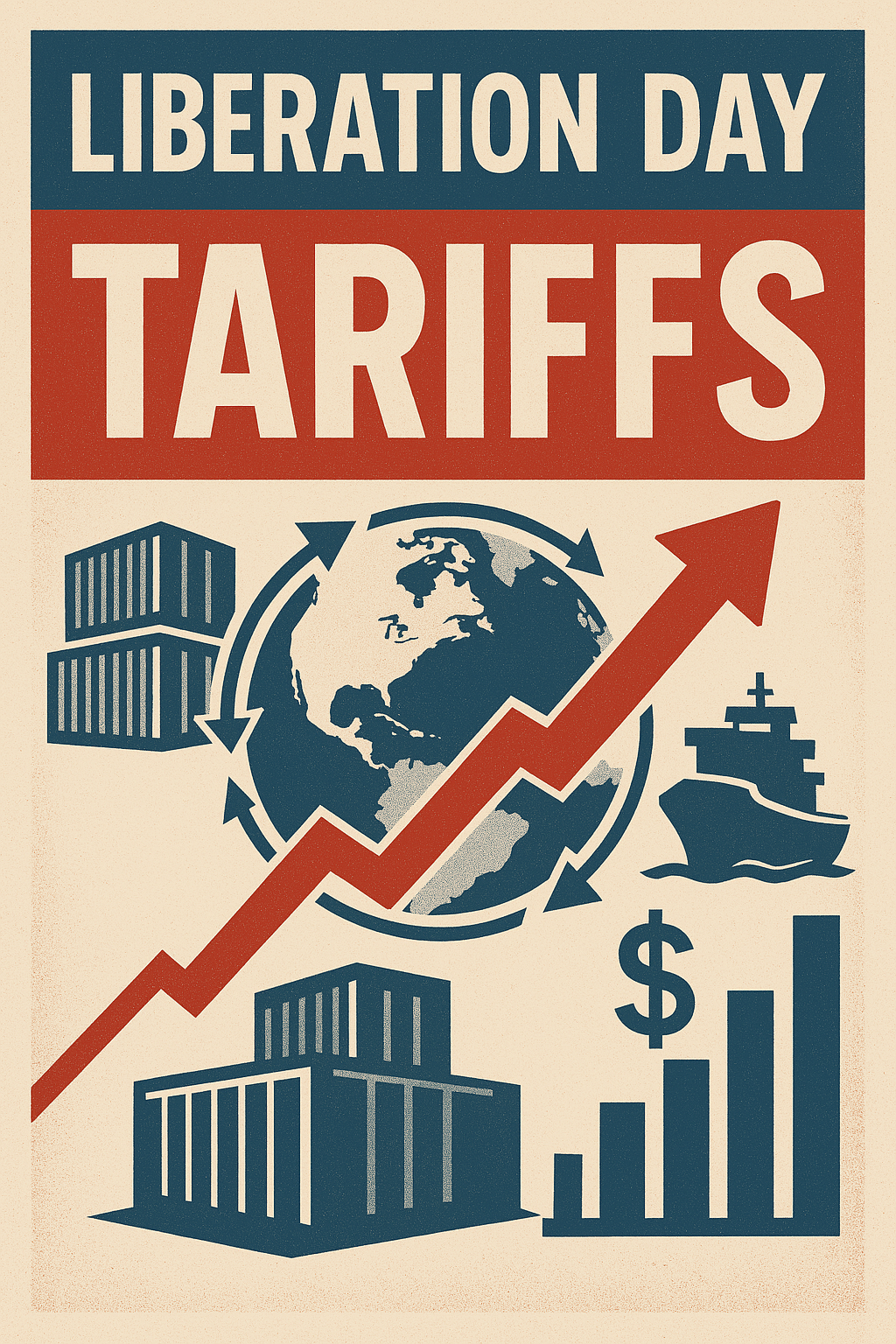Smart Money vs Retail Reactions to Major Tariff News
Trading tariffs news and other major events often shake the markets. Retail traders and institutional “smart money” respond very differently. One of the most telling examples of this difference was during former U.S. President Donald Trump’s announcement of sweeping global tariffs. While many retail traders reacted emotionally—jumping into volatile trades without context—smart money took a strategic approach based on volume, timing, and market psychology.
Smart money doesn’t just react to trading tariffs news; it anticipates how the herd will respond and positions itself to benefit from the chaos. The aim isn’t just to be right—it’s to capitalize on others being wrong. This article will walk through how smart money used the Trump tariff announcement as an opportunity to trap retail traders and secure profits, using volume spread analysis (VSA) and price action.
Trading Tariff News Announcement: Market Response Breakdown
On what was dubbed as “Liberation Day” in the U.S., President Trump announced the imposition of new tariffs on countries across the globe. The move, aimed at protecting American industries, instantly raised global economic concerns and sent shockwaves through financial markets. One of the most reactive assets was the Australian Dollar (AUD), a currency highly sensitive to global trade policies and trading tariffs news.
Looking at the 1-hour chart, as soon as President Trump spoke, the AUD/USD pair initially rallied sharply. Within the same hour, however, it dropped just as wildly, ultimately closing somewhere in the middle of the range. The volume during this first hour was ultra-high—an immediate signal that large players were active. But what were they doing? Were they buying into strength or unloading into euphoria?
In the next hour, the price dropped again, this time closing near the session lows. Interestingly, the volume during this hour was ultra-low. For VSA practitioners, this is a key observation. Low volume on a down bar suggests a lack of selling pressure—not confirmation of a bearish trend. Retail traders often miss this subtle clue.
They view the continuation of price movement as a reason to enter shorts. While the smart money begins to prepare their next move.
Volume Spread Analysis in Action

By the third hour post-announcement, the setup became clearer. The price action appeared to break down further, enticing retail traders into short positions. However, this bar then reversed strongly, closing near the highs on high volume—a classic sign of potential climatic action. This is often where smart money steps in aggressively. They absorb the remaining sell orders and begin to push the market in the opposite direction.
This type of behavior is textbook smart money manipulation. Volume tells the story: a large spike in volume combined with a price reversal indicates accumulation, not distribution. The market was setting up for a rally, not a further decline.
A strong confirmation of smart money involvement came during bars 8 and 9. As the price retraced from its upward move, volume dried up significantly. Low volume on a retracement suggests there is no supply—meaning sellers have vanished. This is the kind of low-risk, high-reward entry point that smart money looks for and retail traders often ignore or misunderstand.
VSA and crowd psychology set professionals apart. Retail sees chaos. Smart money sees opportunity. The stage is set. The prepared make the move.
Trading Tariffs News – The Rally and Entry Opportunity
Once the no-supply bars showed up and price started to rise, smart money was already in the trade. A strong rally followed. Retail traders still holding shorts got stopped out or panicked. That gave smart money more fuel to keep pushing price up.
This kind of reversal, especially during trading tariffs news, shows how markets trap emotional traders. The pullback to bars 8 and 9 came with low volume. That was a clear chance to go long with the big players. Pros wait for setups like this—clean trades based on logic, not emotion.
Recognizing Smart Money Footprints During Tariffs News

Traders who study how big players act during tariff news can avoid costly mistakes. Smart money moves the market when trading tariffs news. They hide their entries using volume tricks.
It’s not about the news itself. It’s about how the market reacts. Watch where volume confirms or rejects the move.
Retail traders often chase headlines. They miss what volume and price action are really saying.
Look for signs. Low volume during a drop means sellers are weak. A wide bar with high volume that closes near the top often shows buying. These are not random moves. Smart money leaves clues behind.
Final Lessons for Trading Tariffs News
The Trump tariff announcement was a masterclass in market psychology and manipulation. It reminds us that in trading tariffs news, it’s not just about being informed—it’s about being prepared. Smart money thrives in these moments not because they know something others don’t, but because they understand how others will behave.
By combining volume spread analysis, market structure, and crowd psychology, traders can begin to align their strategies with those who consistently profit from news events. The next time trading tariffs news or another geopolitical shift hits the headlines, will you react like the herd—or trade like the smart money?

Leave a Reply